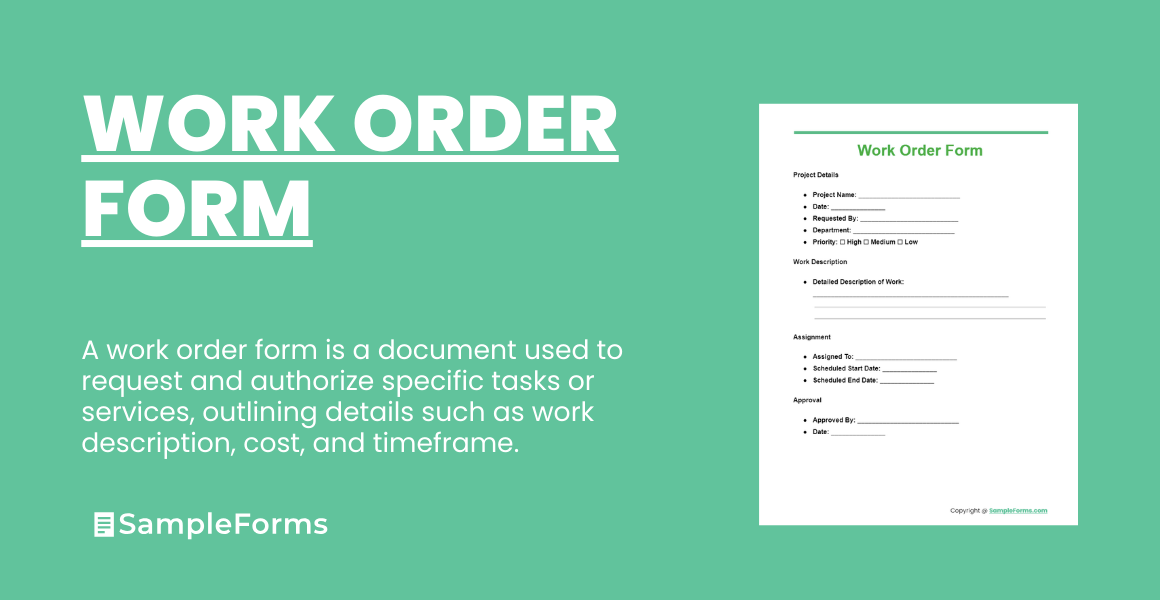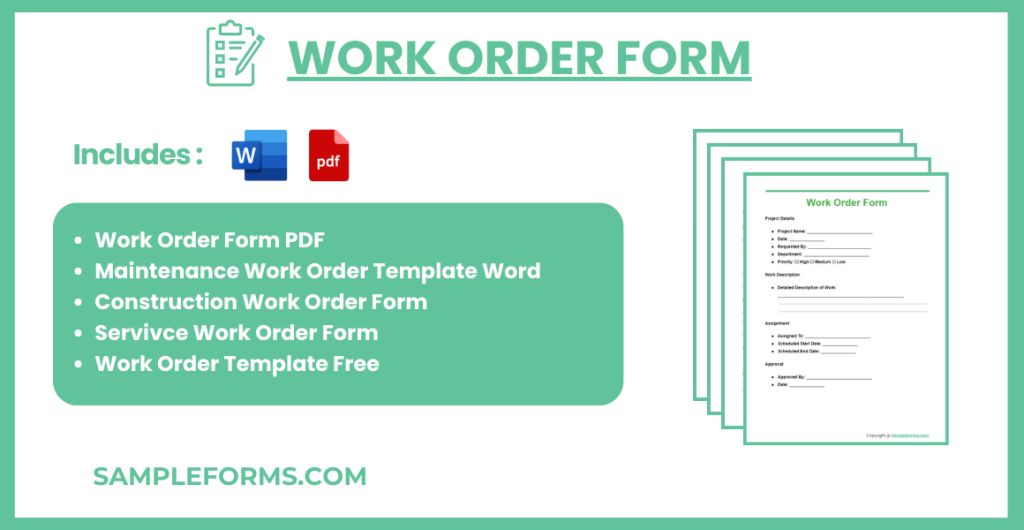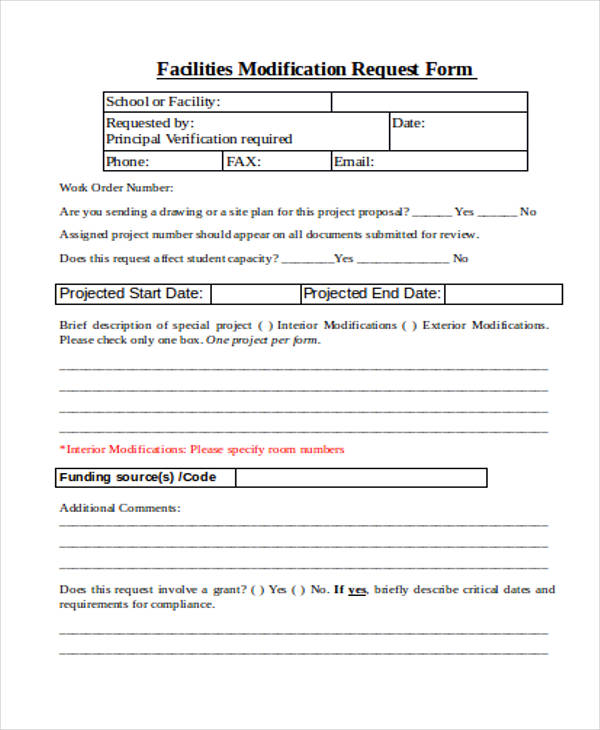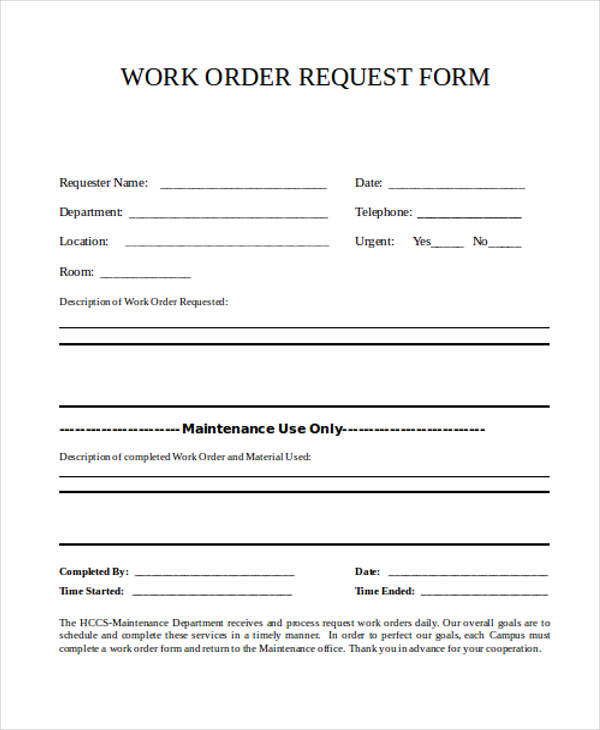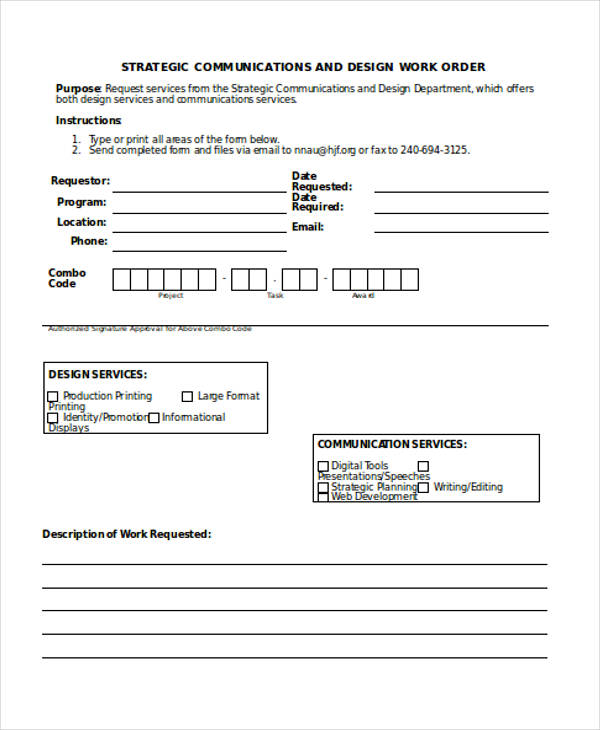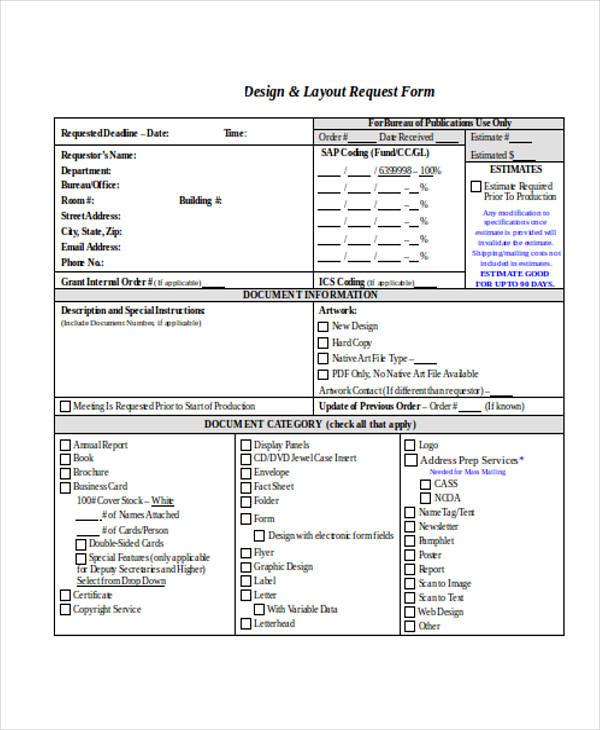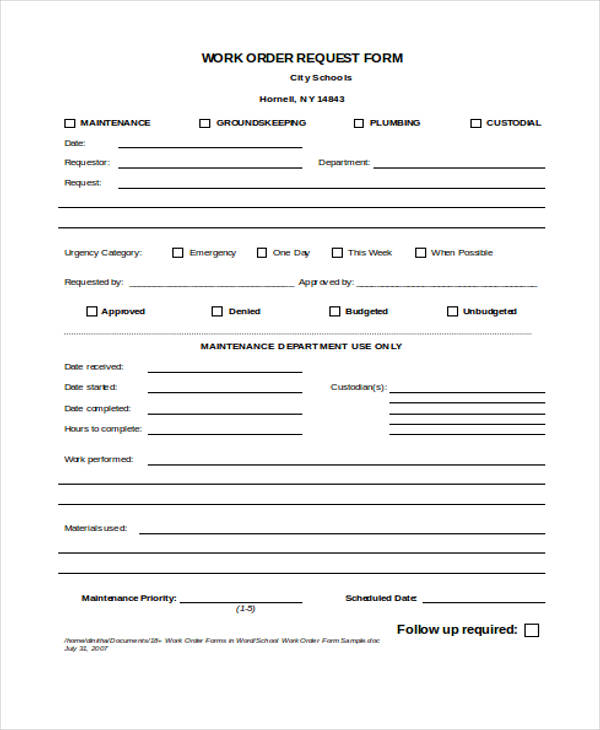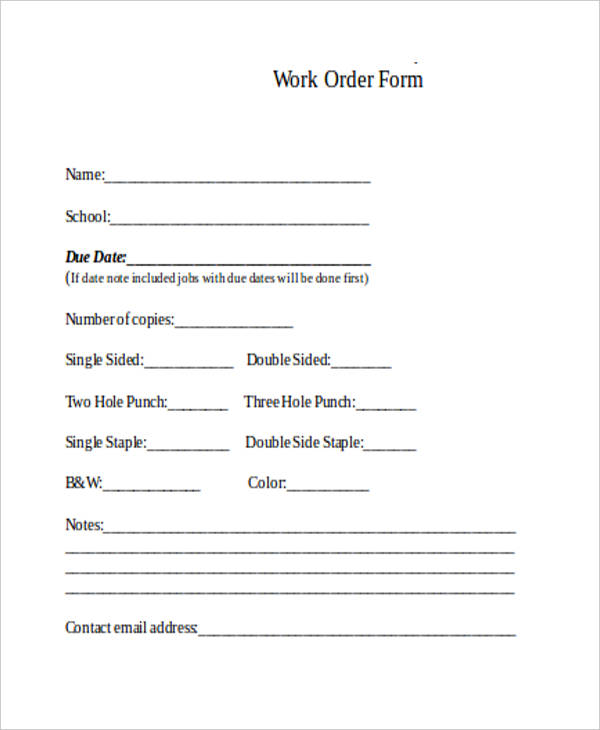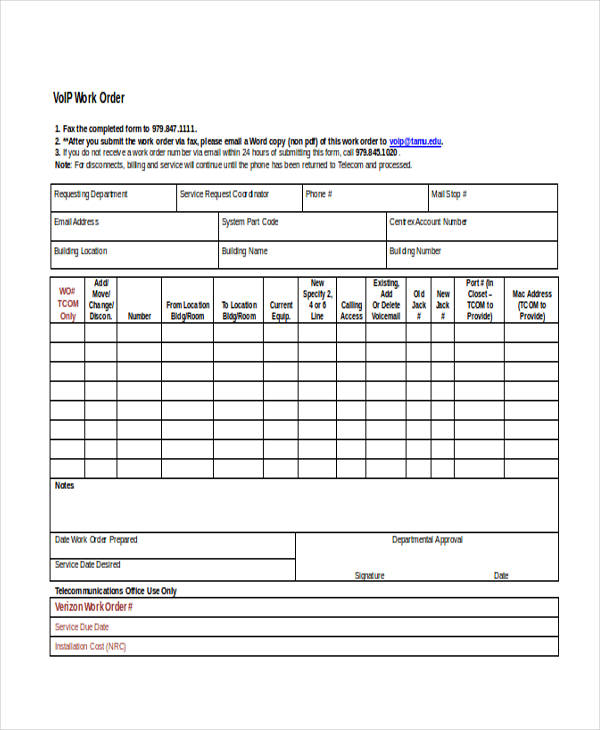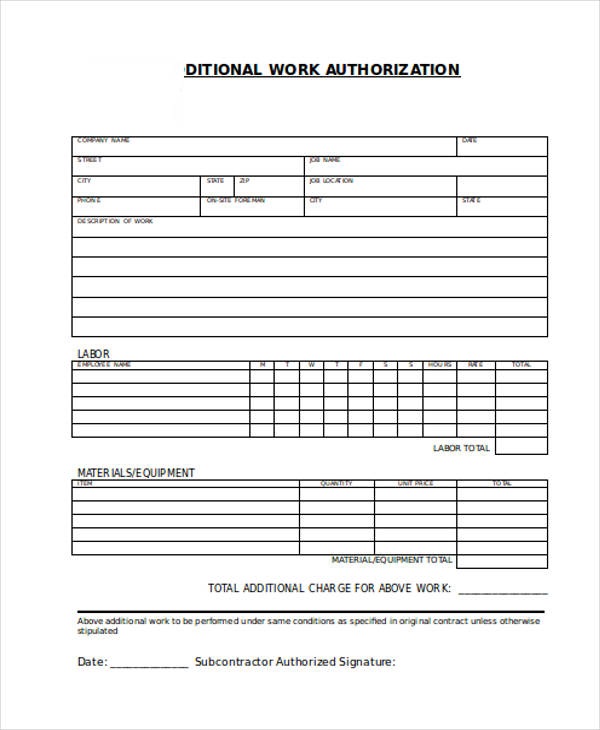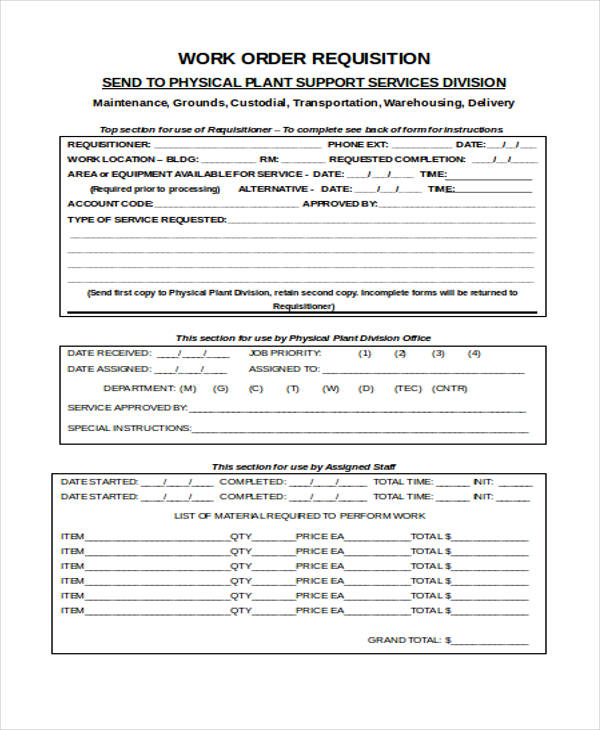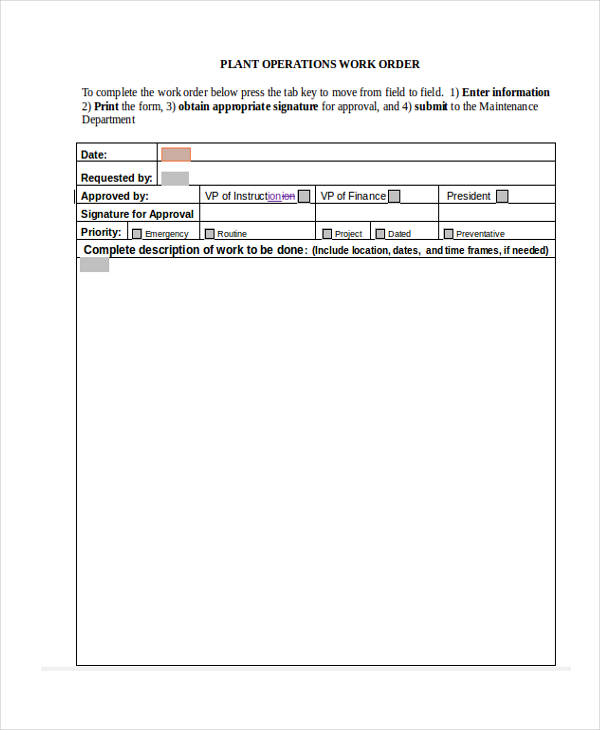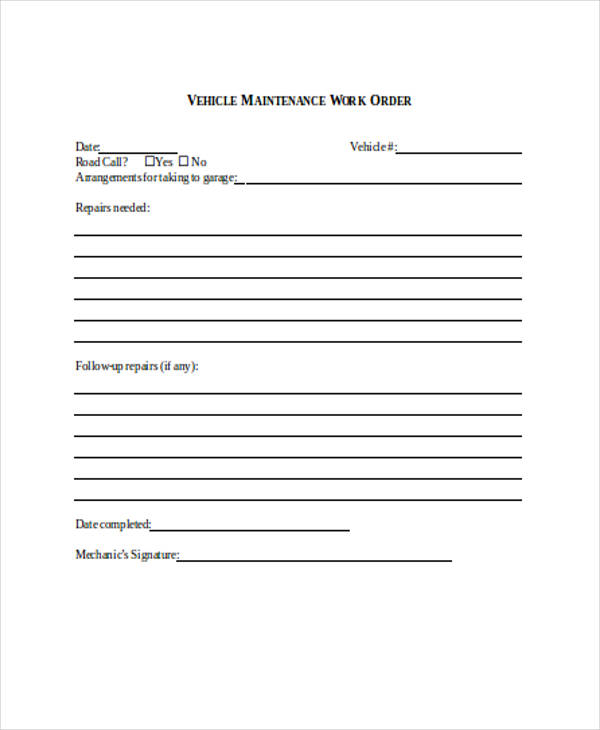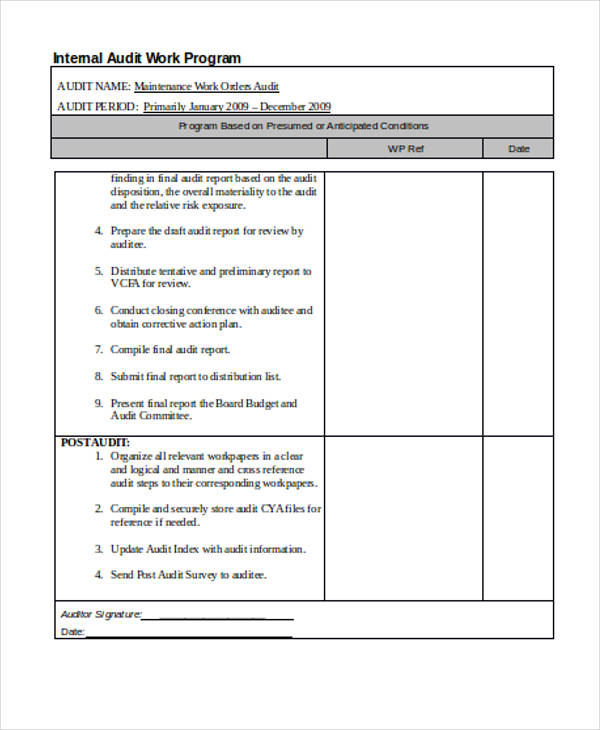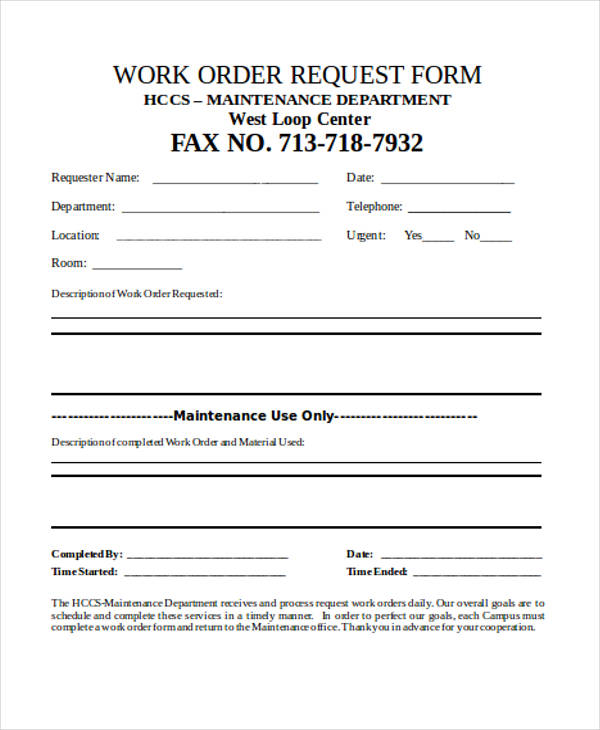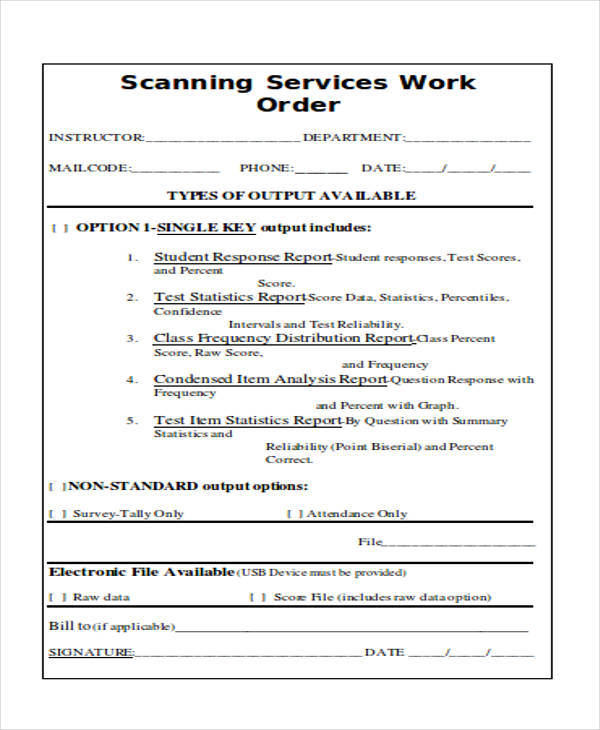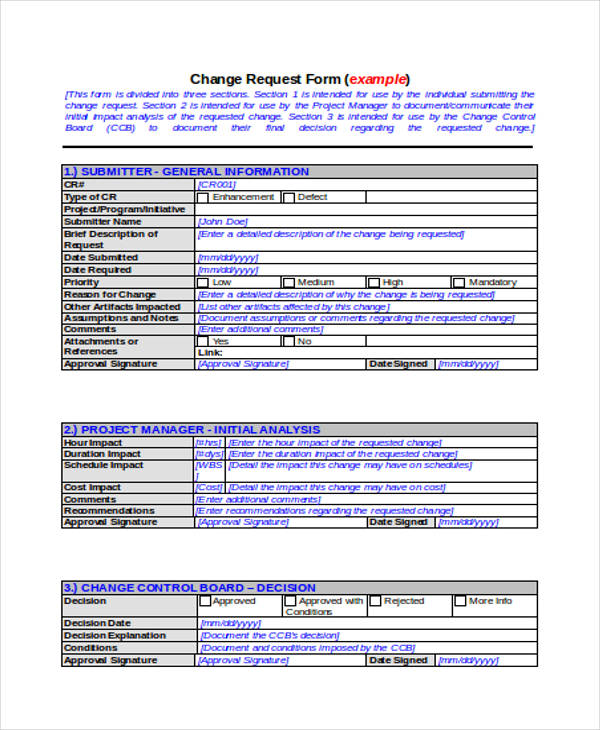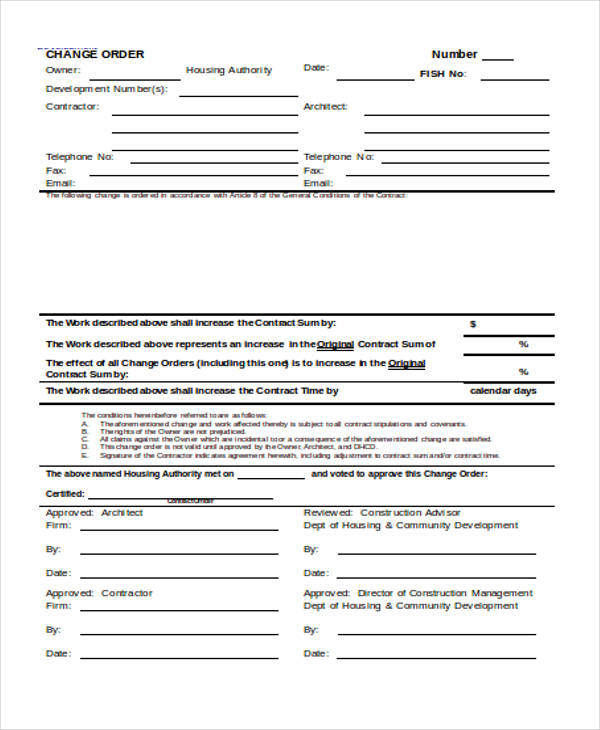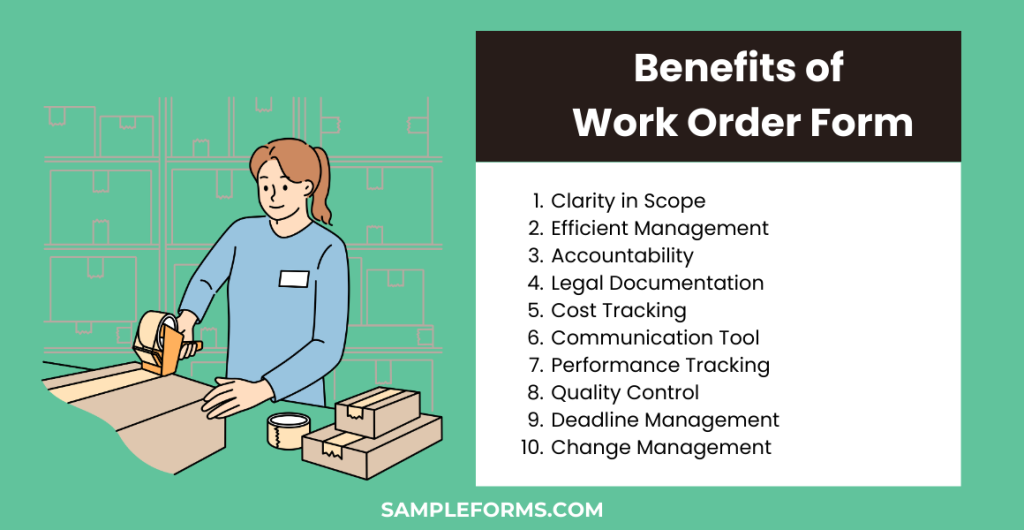Dive into the world of Work Order Forms with our comprehensive guide. From understanding the basics of an Order Form to mastering the nuances of a Work Form, we cover everything you need to know. This guide is packed with examples, tips, and best practices to ensure you’re fully equipped to handle work orders effectively, streamlining operations and enhancing productivity in any setting.
Download Work Order Form Bundle
What is a Work Order Form?
A Work Order Form is a critical document used in various industries to formally request work or services. It outlines the specifics of the job, including tasks, materials needed, and deadlines, serving as a clear communication tool between departments or with external contractors. This form helps in organizing, tracking, and managing work requests efficiently, ensuring that all parties are aligned with the project’s objectives and expectations.
Work Order Form Format
Heading: Work Order Form
This section is the title of the document, clearly identifying it as a Work Order Form.
Section 1: General Information
- Work Order Number: A unique identifier for the work order.
- Date Issued: The date when the work order was created.
- Due Date: The deadline for the work order to be completed.
- Department: The department or team responsible for carrying out the work order.
Section 2: Requestor Information
- Name: The name of the individual or entity requesting the work.
- Contact Information: Phone number and email address for further communication.
- Department/Unit: Specific department or unit making the request.
Section 3: Work Details
- Location of Work: The precise location where the work is to be performed.
- Description of Work: A detailed description of the work to be done, including specific tasks and objectives.
- Priority: Indication of the work order’s priority (e.g., high, medium, low).
Section 4: Assignment
- Assigned To: The name(s) of the individual(s) or team assigned to the work order.
- Scheduled Start Date: The planned start date for the work.
- Scheduled End Date: The planned completion date for the work.
Section 5: Materials and Equipment
- Materials Required: A list of materials needed to complete the work.
- Equipment Required: A list of equipment necessary for the work.
Section 6: Health and Safety
- Hazards: Identification of any potential hazards associated with the work.
- Safety Measures: Specific safety measures or precautions that need to be taken.
Section 7: Approval
- Approved By: The name of the person who approved the work order.
- Approval Date: The date when the work order was approved.
Section 8: Status and Completion
- Work Status: Current status of the work order (e.g., in progress, completed, on hold).
- Actual Start Date: The actual date when the work began.
- Actual End Date: The actual date when the work was completed.
- Comments: Any additional comments or notes about the work order.
Work Order Form PDF
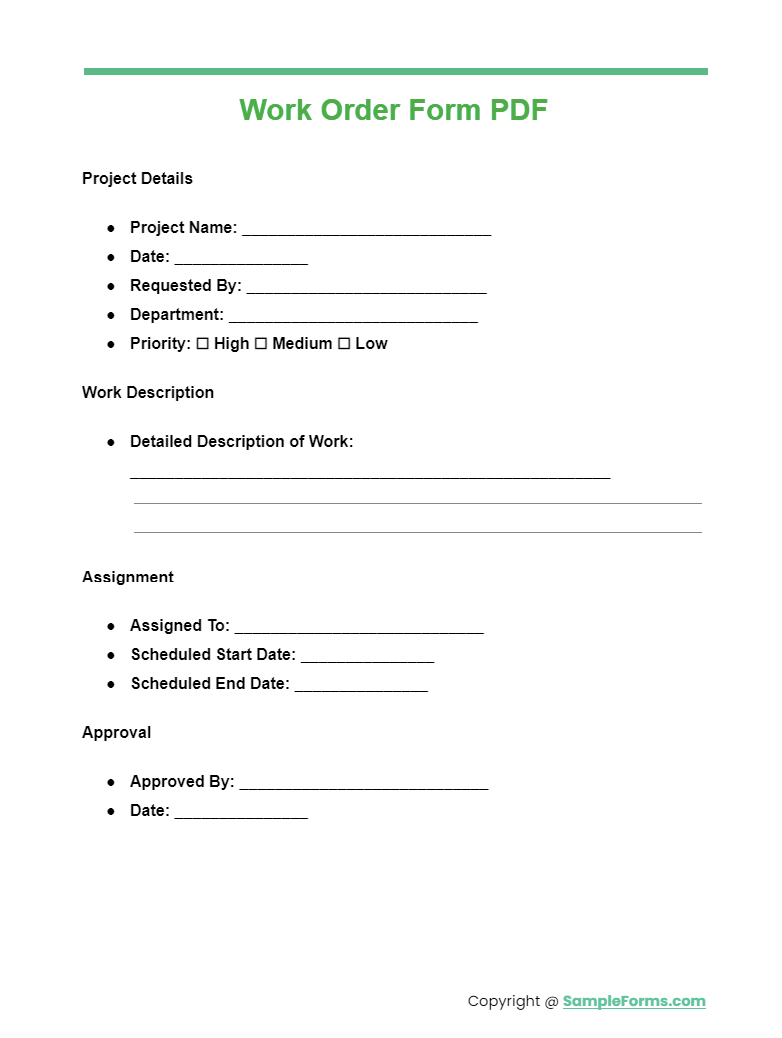
A Work Order Form PDF integrates crucial elements like Event Order Form and Food Order Form, offering a comprehensive template for seamless event and catering management, ensuring detailed order specifications and client satisfaction.
Maintenance Work Order Template Word

This template, incorporating Construction Change Order Form and Sales Order Form, is essential for maintenance and construction projects, allowing for easy adjustments and sales tracking within a single document.
Construction Work Order Form
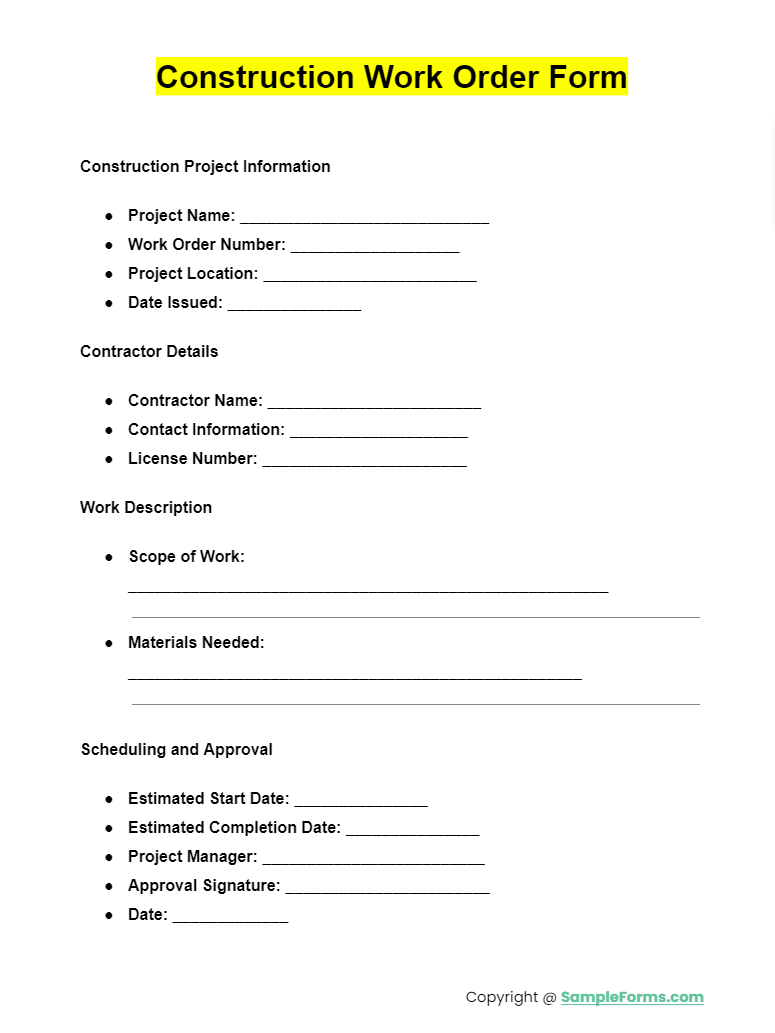
Featuring elements of Restraining Order Form and Purchase Order Form, this Construction Work Order Form is vital for managing construction projects, ensuring legal compliance and streamlined procurement processes.
Servivce Work Order Form
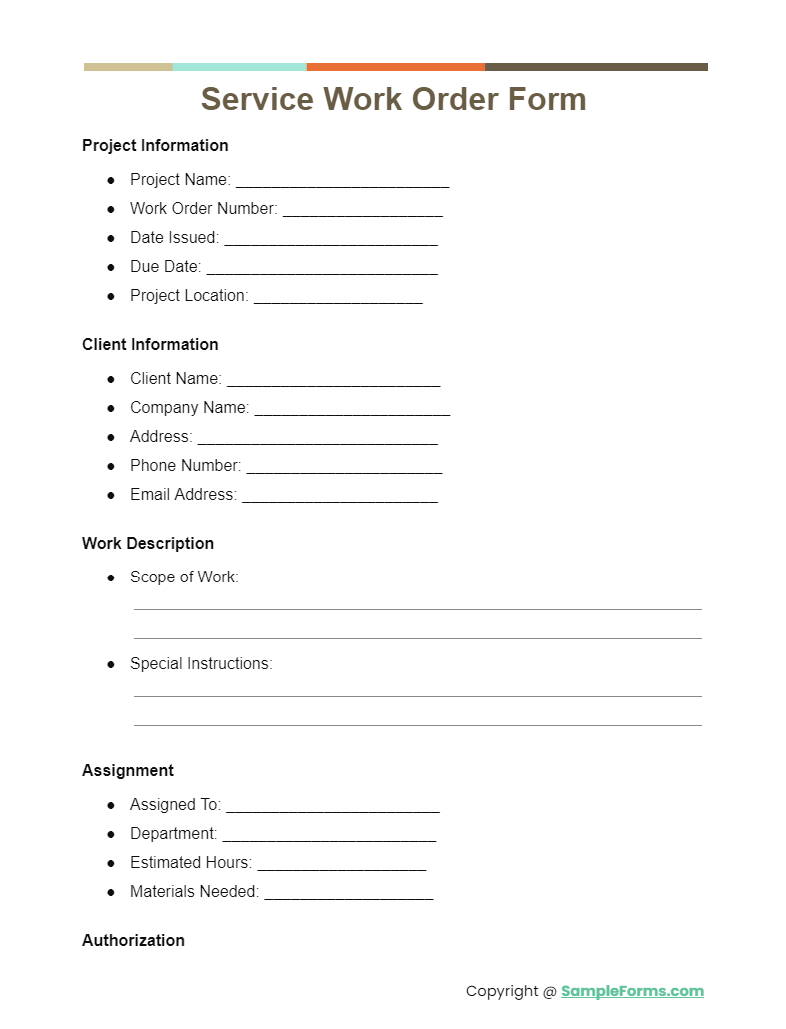
The Service Work Order Form, including Uniform Order Form and Maintenance Work Order Form, is designed for service-based projects, ensuring detailed task assignments and efficient maintenance scheduling.
Work Order Template Free
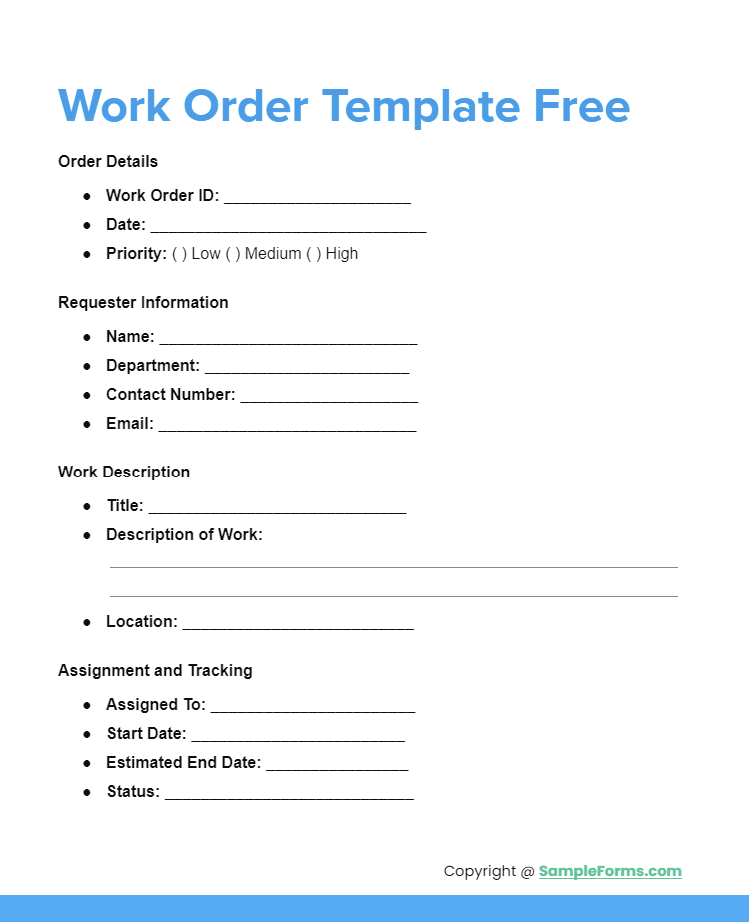
MoreWork Order Form Samples
Work Order Request Forms
Facilities Modification Work Order Request Form
Request for Services Work Order Form
Sample Work Order Request
Graphics Work Order Forms
Graphics Work Order Request Form
Design Layout Request
School Work Order Forms
School Work Order Request
School Work Order
Additional Work Order Forms
Sample Work Order
Additional Work Authorization Order
Work Order Requisition Forms
Work Order Maintenance Requisition Form
Plant Operations Work Order
Maintenance Work Order Forms
Vehicle Maintenance Work Order
Maintenance Work Orders Audit Form
Work Order Service Forms
Work Order Service Request
Scanning Work Order Service
Work Change Order Forms
Work Change Request Order Form
Work Change Order Form Sample
Project Work Change Order Form
Work Order Forms Categories
Facilities Modification Work Order Request Form – this form is used when a client will want to modify, install, or repair an area of a building or facility. This form is often used in institutes and universities.
Request for Services Work Order Form – this is the type of work order form that does not only cover maintenance services but also layout planning, vehicle works, and all other services that a business may render to their client. Under this category is the Design Layout Request Work Order, Graphics Work Order Request Form, Scanning Work Order Service, Plant Operations Work Order, and Vehicle Maintenance Service Work Order Forms.
School Work Order Request Forms – this form may also be used for completing and requesting maintenance for the school’s facilities such as a service school bus, installing lighting for the soccer fields, painting lines on the basketball courts, and even in placing slides and swings for the kid’s playgrounds.
Work Order Authorization – this may be a form or a letter designed to allow the workers to start with the process of executing the orders. The letter may also state the limitations and the boundary areas where the workers are allowed to roam around.
Work Order Maintenance Requisition Form – this form is used to let the workers have authority to use the materials provided by the client and within the premises of the organization’s location.
Maintenance Work Orders Audit Form – aside from stating all the information for the client’s orders, this form contains the specific payments that the client needs to pay for the project.
Work Change Request Order Form – this work order focuses on the changes that the client will want for the project. It is often given during the implementation of the project wherein the client saw glitches with the existing plans and saw the need to add some modifications. Under this form category is the Project Work Change Order Form. You may see our Photography Order Form.
Work Order versus Invoice Bill
These two are often considered as similar documents since it contains a depth information about the transaction, but in reality, a work order is different from an invoice. A Work Order is a request that will be completed by the costumer while an Invoice is a form which is requested by the seller for the buyer’s payment.
The invoice and the work order may have similar information, except for the invoice number and the work order number, but they differ in the specified time that will be presented to both parties.
A Work Order Authorization is another form of document that will authorize the workers to start doing the project. You may see our Service Order Form
What Should be Inside a Work Order Form?
A Work Order will also serve as a documented agreement between the client and the manufacturer. Work Orders are useful in the maintenance department of a company since these contain the details for the needed modification. A Maintenance Work Order or Request Form is required to be submitted for the workers and should contain the following:
The organization’s details. This pertains to having the full name of the company or the organization that will use the work order form.
The total number of products to be made. Some manufacturers will require a minimum number of products to order for them to start doing the project, these may be counted by sets or individually.
The type of material that the manufacturer will use. This will include the details about the material’s texture, length, width, thickness, and the material’s design.
The price of the material. The price will vary depending on the quality of the material and its availability in the market.
The required labor and the number of workers needed. This will help the manufacturer distinguish whether they need more people for the job or to cut off the head count in assigning and dividing the work.
The workers’ rate per hour. The minimum wage of a State may be the basis for the workers’ salaries, however, the company and the manufacturer may agree for a specific range that depends on the type of work that their people will be doing for the project.
The type of machine and the operation it will do. The manufacturer may be required to use various machines for the success of the project. There are instances that the required machine needs to be repaired, therefore, causing an additional payment for the client.
The due date of the work order. There should be a beginning and end date that will serve as a deadline for the manufacturers. These dates should also be agreed by the involved parties since there are certain aspects that should be considered, such as the type of work to be done.
The specification and the additional modification. A client or an organization may add in the form their desired modifications for the project. This may include some additional structures or a change in the color of the existing product. You may also see Consent Order Form
When to Use Work Orders for Modifying Facilities
When an organization will deal with modifications or changing their facilities, they should use a Facilities Modification Work Order Request Form or a Work Order Maintenance Requisition Form. These modifications can either be in interior or exterior areas of a building. Here are instances when this type of work order will be of great use:
- During demolitions of walls and floors.
- When there are equipment installations.
- Repairing mechanical, utility and ventilating systems.
- When there will be a building construction to connect two areas.
- Adding up electrical outlets and equipment.
- Moving built-in types of furniture such as shelves and cabinets.
- Changing the hallways of an office or a school.
- Constructing waiting sheds and courts.
- Installing new irrigating systems.
- Repairing septic tanks, damaged pavements, and walls.
- Replacing landscapes for the garden.
Techniques in Organizing Work Orders
Work Orders are documents which are commonly filed in a folder or a box in the maintenance department of a company. When an inventory will be made, searching through thousands of paperwork will cause some difficulty in finding the appropriate document that he needs. Here are two techniques that companies use to organize their forms:
Color it. A company may either consider using colored folders or adding colored labels to the existing document files that they have. In this way, they can easily distinguish and prioritize the forms. They may separate it by client name, or by the type of service they rendered to the client. Using colors can also aid in the communication capability of the company wherein the staff will know whether the project has been accomplished or if it needs to be done on a specific time.
Indicate a Status. This may include the work status of a project, whether someone has been assigned to it or if there are no volunteers to do the job. The company may also add a shipping indication that shows if the project had been delivered to the client or if it is in the process of delivering. You may also see Bakery Order Form
10 Benefits of Work Order Form
- Clarity in Scope: Defines precise work scope, ensuring both parties understand the tasks and expectations.
- Efficient Management: Streamlines project management and scheduling, leading to better resource allocation.
- Accountability: Assigns responsibility, making it clear who is accountable for each task.
- Legal Documentation: Serves as a legal document that can protect both parties in case of disputes.
- Cost Tracking: Details costs upfront, helping in budget management and preventing unexpected expenses.
- Communication Tool: Acts as a communication bridge between departments or between customers and service providers.
- Performance Tracking: Enables monitoring of progress and performance against the defined tasks.
- Quality Control: Sets standards for the quality of work, ensuring all tasks meet the agreed criteria.
- Deadline Management: Establishes clear deadlines, helping in timely completion of projects.
- Change Management: Facilitates the management of changes or adjustments in the scope of work efficiently.
How do you Draft a Work Order?
To draft a Work Order, include detailed job descriptions, deadlines, and costs, similar to filling out a Money Order Form, ensuring clarity and precision in the request.
Who creates a Work Order?
Work Orders are typically created by project managers or supervisors, similar to how a Restaurant Order Form is prepared, to outline specific job tasks and requirements.
Is a Work Order Legally Binding?
Yes, a Work Order can be legally binding, especially when it includes terms like those found in a Change Order Form, outlining the scope and terms of work agreed upon.
Why is a Work Order form Important?
A Work Order form, akin to a Catering Order Form, is crucial for defining project scopes, deadlines, and expectations, ensuring organized and efficient workflow management.
Can a Work Order be Cancelled?
Yes, a Work Order can be cancelled, subject to terms agreed upon, similar to adjustments made in a Delivery Order Form, depending on the project’s flexibility.
Do Work Orders Expire?
Like a Fundraiser Order Form, Work Orders may have expiration dates or deadlines by which the specified work should be completed, subject to terms outlined in the order.
In summary, the Work Order Form, with its various samples, forms, letters, and applications, is indispensable in managing and executing work requests accurately. Its adaptability, as seen in applications like the Apparel Order Form, demonstrates its utility in diverse industries, making it a cornerstone document for operational success.
Related Posts
-
Order Form
-
FREE 6+ Tickets and Tables Order Forms in PDF | MS Word | Excel
-
FREE 4+ Order Fulfillment Checklist Forms in PDF | MS Word | Excel
-
FREE 7+ Food Order Forms in PDF | MS Word | Excel
-
Fundraiser Order Form
-
FREE 8+ Special Order Forms in PDF
-
FREE 5+ Product and Inventory Order Forms in PDF | MS Word
-
FREE 9+ Photography Order Forms in PDF | MS Word
-
FREE 6+ Jewelry Order Forms in PDF | MS Word | Excel
-
FREE 16+ Ticket Order Forms in PDF | MS Word | Excel
-
FREE 9+ Package Order Forms in PDF | MS Word
-
FREE 9+ Card Order Forms in MS Word | PDF | Excel
-
FREE 10+ Consent Order Forms in PDF | MS Word
-
Advantages of Using Clothing Order Forms [ With Samples ]
-
FREE 11+ Change Order Forms in PDF | Excel | MS Word
